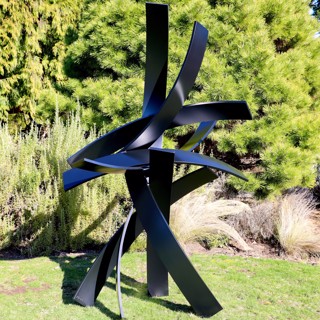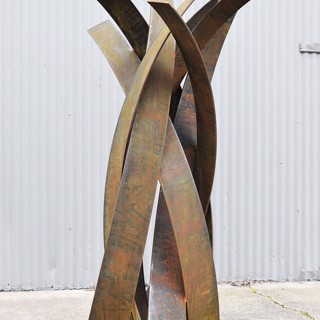



Sculpting the Outdoors: How Fine Art Transforms Architectural Spaces
In the realm of architecture, the relationship between built environments and the great outdoors is a dynamic interplay of form, function, and aesthetic appeal. Outdoor spaces, whether they be gardens, plazas, or courtyards, serve as extensions of architectural design, offering opportunities for both practical use and artistic expression. One potent element that has the power to elevate these outdoor spaces to new heights of beauty and meaning is fine art sculpture.
At its essence, fine art sculpture represents a convergence of human creativity and craftsmanship, transcending mere utilitarianism to evoke emotion, provoke thought, and engage with the surrounding environment. When strategically placed within architectural landscapes, sculptures have the ability to transform outdoor spaces in profound ways.
One of the most impactful aspects of incorporating fine art sculpture into outdoor environments is the enhancement of the sensory experience. Sculptures, with their varied textures, forms, and materials, invite tactile exploration and visual delight. A smooth marble curve or a rugged bronze surface can captivate the viewer, encouraging them to engage with the space on a deeper level. Moreover, the interplay of light and shadow throughout the day adds another layer of dynamism, casting ever-changing patterns and imbuing the surroundings with an ethereal quality.
Beyond mere aesthetic appeal, fine art sculpture has the power to imbue outdoor spaces with narrative and meaning. Each sculpture carries its own story, whether it be a reflection of cultural heritage, a commentary on societal issues, or an expression of the artist's personal journey. When placed within architectural contexts, these sculptures enter into a dialogue with their surroundings, sparking conversations and enriching the built environment with layers of symbolism and significance. For example, a series of abstract sculptures in a corporate plaza might evoke themes of innovation and collaboration, while a collection of figurative pieces in a public park could celebrate the diversity and resilience of the human spirit.
Furthermore, fine art sculpture has the potential to shape the way we interact with outdoor spaces, fostering a sense of community, contemplation, and connection to nature. Large-scale installations can serve as focal points, drawing people together and providing gathering spaces for social interaction and cultural events. Meanwhile, smaller, more intimate sculptures can create moments of pause and reflection, encouraging individuals to slow down, appreciate their surroundings, and engage in introspection.
In conclusion, the integration of fine art sculpture into architectural outdoor spaces represents a harmonious union of creativity and design, enriching the built environment with beauty, meaning, and sensory delight. By engaging with the unique qualities of sculpture—from its tactile textures to its symbolic narratives—architects and designers can create outdoor environments that not only serve practical functions but also inspire, uplift, and nourish the human spirit. As we continue to explore new possibilities at the intersection of art and architecture, let us embrace the transformative power of sculpture to shape our surroundings and elevate the quality of our shared spaces.
LRFA Featured Sculptors
Michael Schultheis
Renowned for his fusion of mathematics and aesthetics, Michael Schultheis creates sculptures that explore the intricate patterns and structures found in mathematical equations. His works, often composed of geometric forms and mathematical symbols, blur the lines between art and science, inviting viewers to contemplate the beauty and complexity of mathematical concepts.
Matt Devine
With a focus on sleek lines and minimalist forms, Matt Devine's sculptures exude a sense of elegance and sophistication. His minimalist aesthetic belies a deep exploration of balance, proportion, and spatial relationships, resulting in sculptures that are at once serene and dynamic.
Gino Miles
Drawing inspiration from classical sculpture and contemporary design, Gino Miles creates sculptures that evoke a sense of timeless elegance and grace. His figurative works, often characterized by fluid lines and dynamic movement, capture the essence of the human form in motion, inviting viewers to experience a sense of rhythm and vitality.
These artists further highlight the breadth and depth of sculptural talent represented by Laura Rathe Fine Art. From the abstract to the figurative, from the monumental to the intimate, each artist brings their own unique perspective and artistic vision to the gallery's collection, enriching the cultural landscape and inspiring viewers with their creativity and craftsmanship. Whether exploring the intersection of mathematics and art, pushing the boundaries of minimalist design, or celebrating the beauty of the human form, these sculptors continue to redefine the possibilities of contemporary sculpture and shape the dialogue surrounding art and aesthetics in the 21st century.
